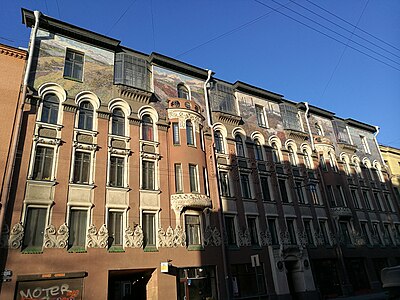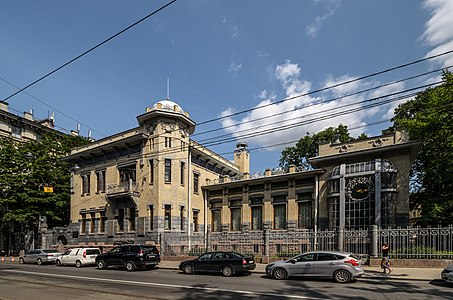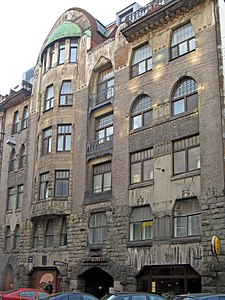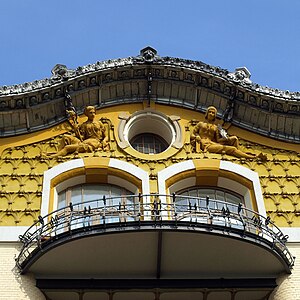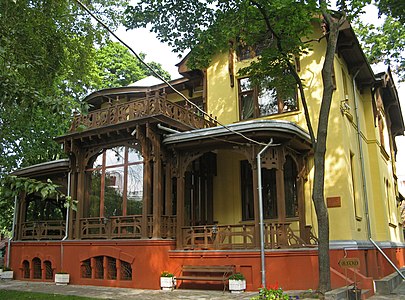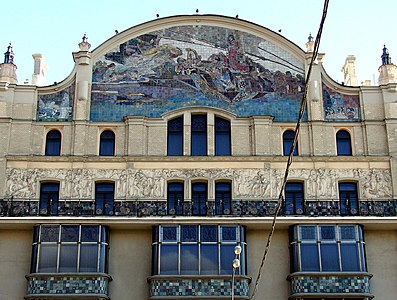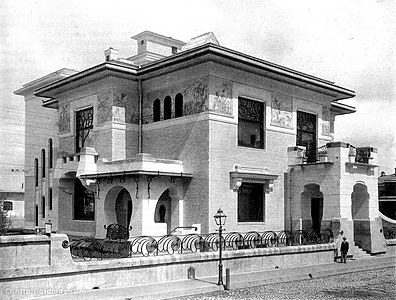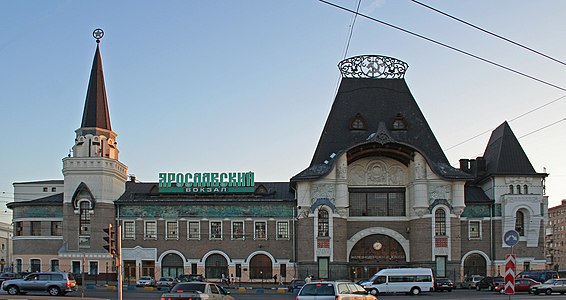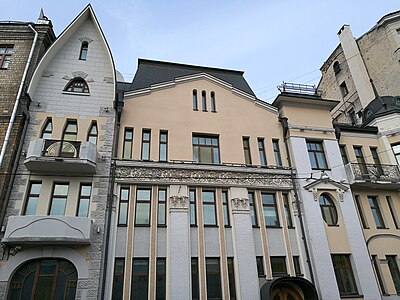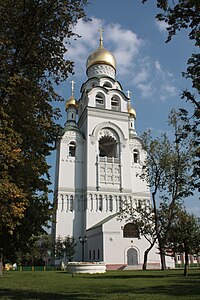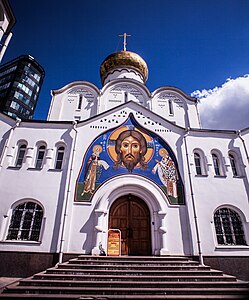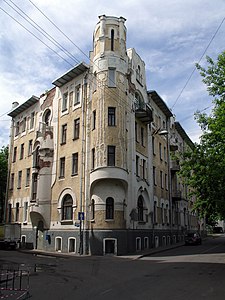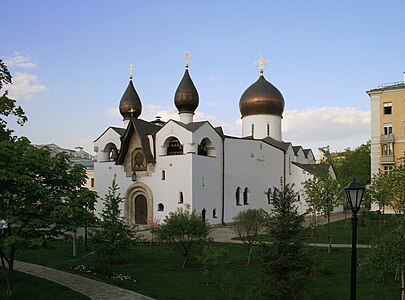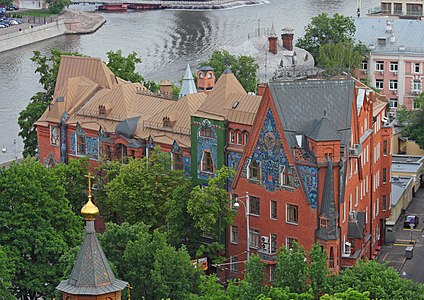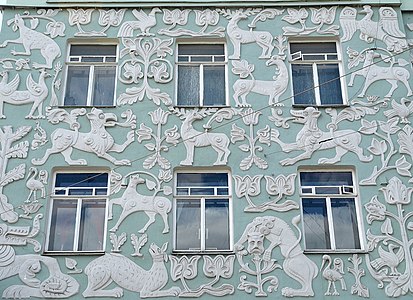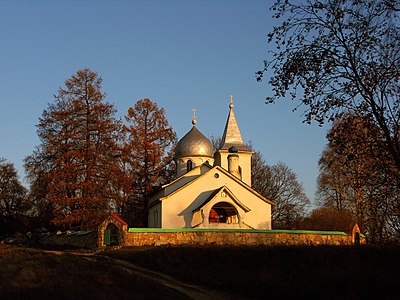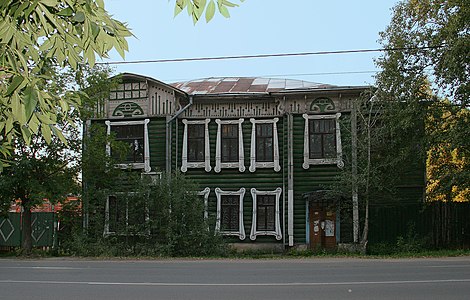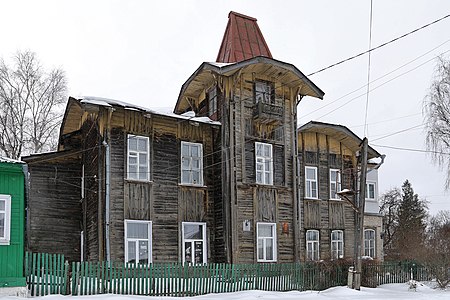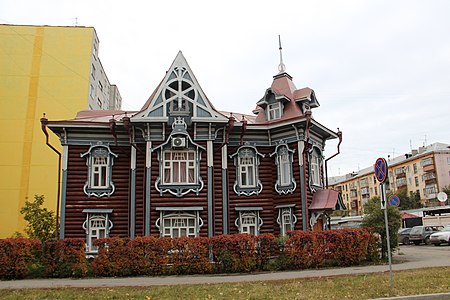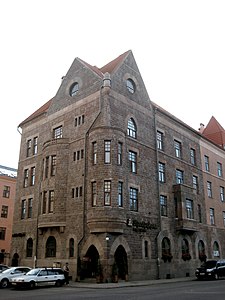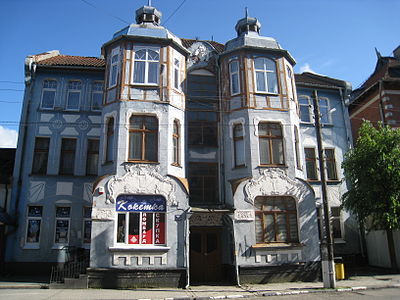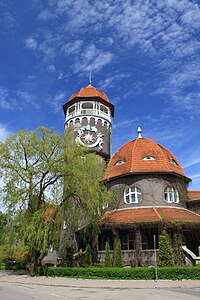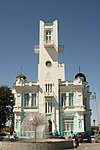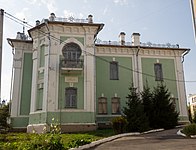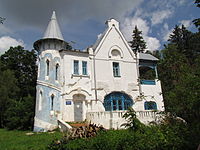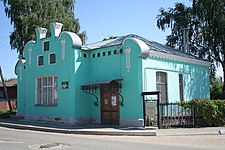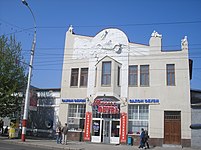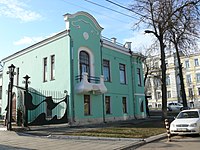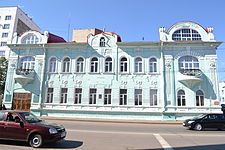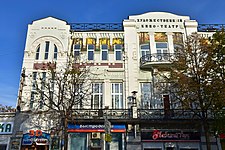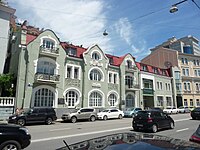|
Art Nouveau architecture in Russia
  Art Nouveau is an international style of art, architecture and applied arts, especially the decorative arts, that was most popular between 1893 and 1910. In the Russian language it is called Art Nouveau or Modern (in Cyrillic: Ар-нувo, Моде́рн).  Art Nouveau architecture in Russia was mostly built in large cities by merchants and Old Believers, and was highly influenced by the contemporary movements[1] that constituted the Art Nouveau style: the Glasgow School, Jugendstil of Germany, Vienna Secession, as well as Russian Revival architecture and the National Romantic style of Nordic countries (one of which, Grand Duchy of Finland, was a part of Russian Empire) In some Russian towns, there also were earlier examples of wooden architecture, the architecture of Kievan Rus', which influenced the style. Some Russian Art Nouveau buildings were built on territories that were part of Germany and the Grand Duchy of Finland during the Art Nouveau period and were ceded to the Soviet Union after World War II. Russian architects also worked on the development of Harbin in China after 1898, which explains the presence of Art Nouveau architecture there. Saint Petersburg The first Art Nouveau building in Russia was built in Saint Petersburg in 1898.[nb 1] It was Hauswald summer house built by Vladimir Chagin and Vasily (Wilhelm) Schoene. As Saint Petersburg was situated close to the border with Grand Duchy of Finland, there was a strong influence of its National Romantic style on Art Nouveau Architecture in Saint Petersburg. This style is called "Severny modern" in Russia (in Cyrillic: Северный модерн) meaning "Northern Art Nouveau". But European movements influenced local architecture as well. Notable examplesSeven Saint Petersburg buildings[nb 2] are sometimes considered as notable examples of Art Nouveau,[2] all by different architects:
National Romantic styleThe last two building are examples of Nordic National Romantic style. Other notable examples of that movement are:
Islamic Revival architectureThe Saint Petersburg Mosque (1910–1921), designed by the architect Nikolai Vasilyev in the Islamic Revival style, is modelled after the mosque of Gur-e-Amir, the tomb of Tamerlane in Samarkand (14th century).[5][6][7]
Russian Revival influenceMany Russian Orthodox churches constructed in the Art Nouveau period are primarily examples of Russian Revival architecture, though they often include some modern elements. In Saint Petersburg these are:
MoscowLev KekushevOne of first Art Nouveau buildings in Moscow was the List House (1898–99) by Lev Kekushev. Kekushev was acquainted with Victor Horta, the initiator of Art Nouveau movement, and the house shows the natural curving forms, open interiors and floral designs of Horta. Kekushev's buildings are notable for his skilful use of ceramic and iron ornaments. His buildings also have a signature feature: a ceramic depiction on the facade or a sculpture of a lion, or 'Lev', after his first name. Prominent buildings by Lev Kekushev in Art Nouveau style include:
Lev Kekushev also took part in the construction of the Hotel Metropol Moscow. In 1898–1899, he won the first prize in the open contest, but the commissioner of the project Savva Morozov discarded the decision of a professional jury and awarded the prize to William Walcot. However, the owners retained Kekushev as an overall project manager. Kekushev's assistance was probably crucial to the final realization of the complex structure.[10]
Franz (Fyodor) SchechtelAnother influential master of Russian Art Nouveau who worked in Moscow was Franz (Fyodor) Schechtel. Starting his career with Neo-Gothic buildings and finishing career with Neoclassical ones, he built his best-known masterpieces in Art Nouveau style. In 1901 he was commissioned to build the pavilion of Russia at Glasgow Exhibition. There he gained international recognition and got to know Charles Rennie Mackintosh who influenced Schechtel's art. Another influence was Joseph Maria Olbrich, the founder of the Darmstadt Artists' Colony, whose Ludwig Habich House was an inspiration for the Gorky Museum (1900–1903).[11] His other works in Moscow included:[12]
National Romantic styleThe influence of Nordic National Romantic style was weaker in Moscow than in Saint Petersburg. Buildings with National Romantic influence in Moscow are:
Old Believers churchesAfter the restriction to build Old Believers churches was withdrawn in 1905, construction of numerous Old Believers churches was started. Along with two churches listed above, some of them shared both Russian Revival and Art Nouveau characteristics:
An Old Believers chapel was also built on the upper floor of the Ryabushensky House in Moscow, with a mixture of Russian Revival architecture and Art Nouveau decoration.
Other architectsOther notable architects of Art Nouveau in Moscow include:
The Trinity Church Apartments building (also known as House with Beasts) includes a stone carving made by Sergei Vashkov inspired by carvings of Cathedral of Saint Demetrius in Vladimir and Saint George Cathedral in Yuryev-Polsky of XII and XIII centuries.[citation needed]
Art Nouveau and Russian Revival style outside Saint Petersburg and Moscow Art coloniesArt Nouveau in Russia was promoted not only by single architects but also by art colonies who worked in the Russian Revival style. The two best-known colonies were situated in Abramtsevo, funded by Savva Mamontov, and Talashkino, funded by Princess Maria Tenisheva. They mostly dealt with interior and ceramics but also left architecture monuments:
Some researches include Church of the Holy Mandylion in Abramtsevo in the list of Art Nouveau buildings,[14] but it was built in 1881–1891, before the inception of Art Nouveau movement. Other Orthodox churchesMost Art Nouveau churches in Russia are also considered Russian Revival. Along with the already described examples, some notable exampled include:
Wooden artWood carving is also a distinctive feature of the Russian Revival style and has become a feature of Russian Art Nouveau wooden houses. Houses with wood carvings can be found not only in Central Russia but also in Ural (Kungur and Kurgan) and Siberia (Tomsk and Tyumen). National Romantic and Jugendstil buildings in Karelia and East PrussiaThe territories of Karelian Isthmus and partly East Prussia that belonged to Finland and Germany respectively were ceded to Soviet Union after World War II. The Art Nouveau heritage at Karelian Isthmus consisted of:
In East Prussia (that became Kaliningrad Oblast) houses in Zelenogradsk and the water tower in Svetlogorsk can be noted.
Gallery of regional examplesSee alsoNotes
References
Bibliography
External links |


